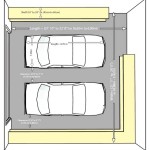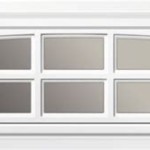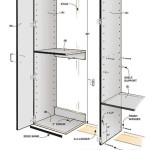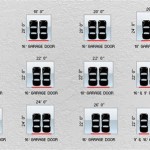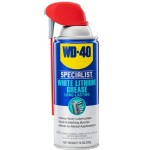Retainer Clips For Garage Door Insulation: A Comprehensive Guide
Garage door insulation is a critical component of maintaining energy efficiency within a home or commercial building. An insulated garage door not only helps regulate temperature, reducing energy costs associated with heating and cooling, but also minimizes noise transmission and strengthens the overall structural integrity of the door. However, the effective application and long-term performance of garage door insulation heavily rely on the proper installation methods and the quality of materials used. Among the various installation components, retainer clips play a pivotal role in securing the insulation panels to the door's structure.
Retainer clips are small, yet essential, fasteners designed to hold insulation panels in place within the recessed sections of a garage door. These clips are typically made of plastic or metal, and their specific design allows them to securely grip the insulation material without causing damage to the door surface. The clips are strategically positioned across the insulation panels, ensuring uniform distribution of pressure and preventing sagging or detachment over time. The selection and installation of appropriate retainer clips are crucial for maximizing the benefits of garage door insulation.
Improper insulation installation, including the use of inadequate or poorly installed retainer clips, can lead to a range of problems. Insulation panels may become dislodged, compromising the thermal barrier and creating gaps through which air can flow freely. This, in turn, negates the energy-saving advantages of the insulation and can even contribute to moisture buildup, potentially damaging both the insulation itself and the garage door structure. Therefore, a thorough understanding of retainer clip types, installation techniques, and best practices is indispensable for achieving optimal garage door insulation performance.
Types of Retainer Clips
The market offers a variety of retainer clips tailored to different types of garage doors and insulation materials. Understanding the characteristics of each type is essential for selecting the most appropriate option for a specific application. The primary distinctions between retainer clips involve their material composition, design, and method of attachment.
Plastic Retainer Clips: These clips are commonly made from durable polymers like nylon or polypropylene. Plastic clips are lightweight, corrosion-resistant, and relatively inexpensive. They are well-suited for use with lightweight insulation panels, such as polystyrene or fiberglass batts. The design of plastic clips typically involves a barbed or snap-fit mechanism that allows them to be easily inserted into pre-drilled holes or directly into the insulation material. While plastic clips offer convenience and affordability, they may be less robust than metal clips in demanding environments or when used with heavier insulation materials.
Metal Retainer Clips: Metal clips are typically constructed from steel or aluminum, providing superior strength and durability. These clips are suitable for use with heavier insulation materials, such as rigid foam boards or spray foam insulation. Metal clips often feature a more complex design, incorporating features like self-tapping screws, spring-loaded mechanisms, or locking tabs to ensure a secure and long-lasting attachment. While metal clips offer enhanced performance and resistance to wear and tear, they may be more expensive than plastic clips and require more specialized installation tools.
Universal Retainer Clips: Some retainer clips are designed for compatibility with a wide range of garage door types and insulation materials. These universal clips often feature adjustable components or adaptable designs that allow them to be used in various applications. Universal clips can be a convenient option for homeowners or contractors who require a versatile fastener that can be used across multiple projects. However, it is crucial to ensure that the chosen universal clip is compatible with the specific garage door and insulation material to avoid compromising the integrity of the installation.
In addition to these primary categories, there are specialized retainer clips designed for specific garage door models or insulation types. These specialized clips may feature unique shapes, sizes, or attachment mechanisms that are tailored to the particular requirements of the application. Consulting with a garage door specialist or insulation professional can help identify the most appropriate retainer clip for a given project.
Installation Techniques
The effectiveness of retainer clips hinges not only on the type of clip selected but also on the proper installation techniques employed. A well-executed installation ensures that the insulation panels are securely fastened to the garage door, maximizing their thermal performance and preventing premature failure. The following steps outline a general procedure for installing retainer clips, although specific instructions may vary depending on the type of clip and the garage door design.
Preparation: Before commencing the installation, it is essential to thoroughly clean the garage door surface to remove any dirt, debris, or grease that could interfere with the adhesion of the retainer clips. Use a mild detergent and water solution, followed by a clean, dry cloth. Ensure that the garage door is in good working order and that any necessary repairs or maintenance have been completed. Gather all the necessary tools and materials, including the retainer clips, insulation panels, a measuring tape, a marking pencil, a drill (if required), and safety glasses.
Measurement and Marking: Carefully measure the dimensions of each garage door panel and cut the insulation panels to the appropriate size. Ensure that the insulation panels fit snugly within the recessed sections of the door, leaving minimal gaps. Use a marking pencil to indicate the locations where the retainer clips will be installed. The spacing between clips will depend on the size and weight of the insulation panels, but a general guideline is to place clips every 12 to 18 inches along the perimeter of each panel and at regular intervals across the panel's surface. Pay close attention to the manufacturer's recommendations for clip placement.
Clip Installation: Depending on the type of retainer clip, the installation process may involve drilling pilot holes, inserting the clip into a pre-existing hole, or directly attaching the clip to the insulation material. For clips that require drilling, use a drill bit that is slightly smaller than the diameter of the clip's shank to create a snug fit. Insert the clip into the hole and apply firm, even pressure until it is securely seated. For clips that feature a snap-fit or locking mechanism, ensure that the clip is properly engaged to prevent it from dislodging over time. For clips that feature self-tapping screws, carefully drive the screw into the garage door surface until the clip is firmly attached. Avoid over-tightening the screws, as this could damage the garage door or strip the threads.
Panel Installation: Once the retainer clips are installed, carefully position the insulation panels within the recessed sections of the garage door. Ensure that the panels are properly aligned and that they are flush with the door surface. Gently press the panels onto the retainer clips, ensuring that each clip engages securely with the insulation material. Double-check that all the clips are firmly attached and that the panels are not sagging or loose. If necessary, add additional clips to provide extra support.
Inspection and Adjustment: After the installation is complete, thoroughly inspect the garage door to ensure that the insulation panels are securely attached and that the retainer clips are properly functioning. Open and close the garage door several times to check for any interference or obstructions. If any problems are detected, make the necessary adjustments to ensure that the door operates smoothly and that the insulation panels remain firmly in place. Periodically inspect the retainer clips for signs of wear and tear, and replace any damaged or missing clips promptly.
Key Considerations for Choosing Retainer Clips
Selecting the optimal retainer clips for a garage door insulation project requires careful consideration of several factors, including the type of garage door, the type of insulation material, the environmental conditions, and the desired lifespan of the installation. By carefully evaluating these factors, it is possible to choose retainer clips that will provide reliable performance and long-lasting durability.
Door Material and Construction: The material and construction of the garage door play a significant role in determining the appropriate type of retainer clip. Steel garage doors, for example, may require metal clips with self-tapping screws for secure attachment. Wood garage doors, on the other hand, may be more suitable for plastic clips with barbed fasteners. Consider the thickness and structural integrity of the door panels when selecting the retainer clips. If the door panels are thin or weak, avoid using clips that require excessive drilling or force to install, as this could damage the door.
Insulation Material and Thickness: The type and thickness of the insulation material will also influence the choice of retainer clips. Heavier insulation materials, such as rigid foam boards, require more robust clips that can provide adequate support. Thicker insulation panels may necessitate clips with longer shanks or adjustable features to accommodate the increased depth. Ensure that the chosen clips are compatible with the insulation material and that they can effectively grip the material without causing damage.
Environmental Conditions: The environmental conditions to which the garage door is exposed can also affect the performance of retainer clips. In humid or corrosive environments, consider using clips made from corrosion-resistant materials, such as stainless steel or treated plastic. In areas with extreme temperature fluctuations, choose clips that can withstand the expansion and contraction of the insulation material without losing their grip. Consider the potential for exposure to moisture, chemicals, or UV radiation when selecting the retainer clips.
Long-Term Durability and Maintenance: The intended lifespan of the garage door insulation installation should also be considered when choosing retainer clips. For long-term installations, opt for durable clips that are designed to withstand wear and tear. Periodically inspect the clips for signs of damage or corrosion, and replace any worn or broken clips promptly. Proper maintenance will help ensure that the insulation panels remain securely attached and that the garage door continues to provide optimal thermal performance. Consider the ease of replacement when selecting the retainer clips, in case future repairs are necessary.
By carefully considering these factors, homeowners and contractors can make informed decisions about which retainer clips are best suited for their specific garage door insulation projects. Selecting the right clips and installing them properly will help ensure that the insulation panels remain securely attached, providing optimal thermal performance and long-lasting durability.

Garage Door Insulation Clip By Johnringo Download Free Stl Model Printables Com

Garage Door Insulation Clips By Bpopp Thingiverse

Ado Products Replacement Pins And Caps Single Garage Door Insulation Kit Gdikstriangle The Home

Backskin Retainers Insulation Locking

980031
Car Retainer Clips Best Garage Door Insulation Clip Plastic Rivets

Condo Blues Garage Workshop Transformation Insulate The Door

Car Retainer Clips Best Garage Door Insulation Clip Plastic Rivets

Car Retainer Clips Best Garage Door Insulation Clip Plastic Rivets

How To Insulate Garage Doors Eco Actions


